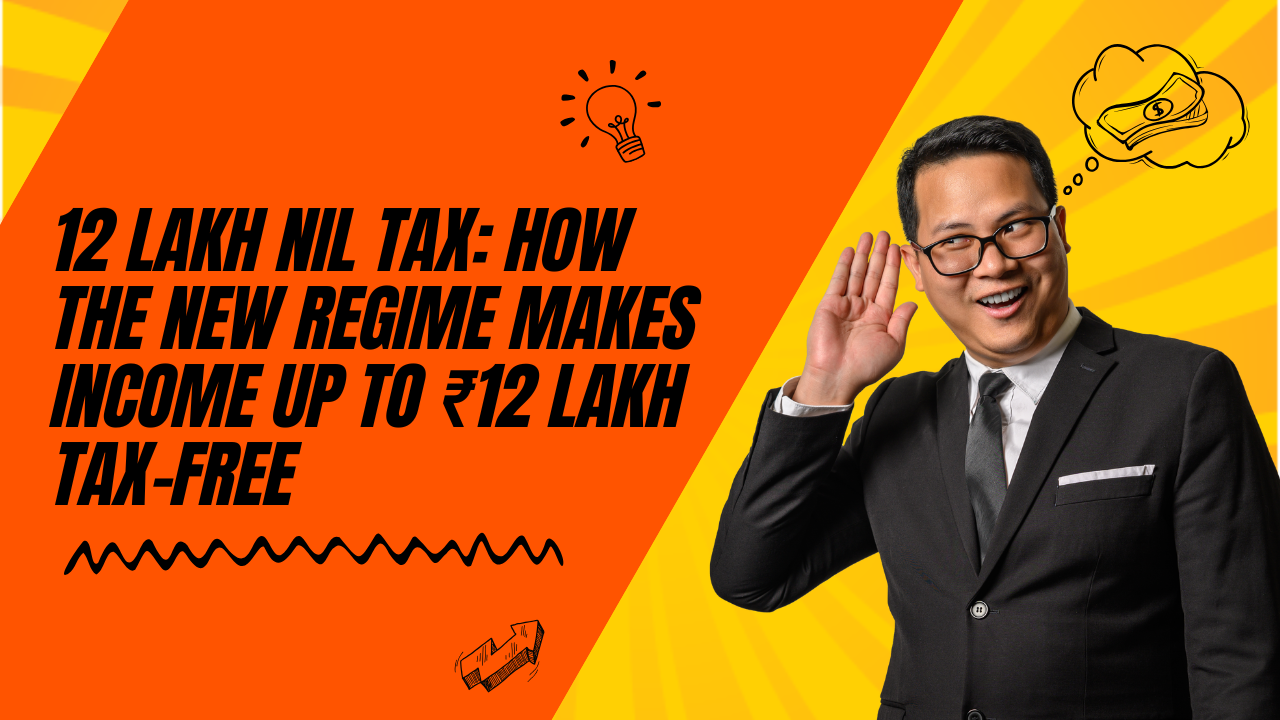The 12 lakh nil tax provision in India’s new tax regime is a game-changer for middle-income earners. Announced in the Union Budget 2025, this policy promises zero tax liability for individuals earning up to ₹12 lakh annually. But how does it work? Let’s break down the slabs, rebates, and calculations to show how you can save over ₹60,000!

What Is the 12 Lakh Nil Tax Rule?
Under the new tax regime, taxpayers with an annual income of ₹12 lakh or less can now enjoy zero tax liability. Here’s the breakdown:
Tax Slabs Under the New Regime (FY 2024-25)
- ₹0–4 lakh: 0% tax
- ₹4–8 lakh: 5% tax (₹20,000)
- ₹8–12 lakh: 10% tax (₹40,000)
Total Tax Before Rebate: ₹60,000
Standard Deduction Rebate: ₹75,000
Final Tax Payable: ₹0
This means even though your calculated tax is ₹60,000, the ₹75,000 rebate wipes it out entirely.
How the 12 Lakh Nil Tax Benefits You
1. Tax-Free Income for Middle-Class Families
With rising living costs, the 12 lakh nil tax threshold offers relief. For example:
- A salary of ₹12 lakh: ₹0 tax after rebate.
- Old regime comparison: You’d pay ~₹78,000 under previous slabs.
2. Standard Deduction Boost
The ₹75,000 rebate isn’t just for salaried individuals. Freelancers and professionals can also claim it, making the new regime more attractive.
3. Simplicity Over Complexity
Unlike the old regime (with HRA, LTA, and Section 80C deductions), the new system requires no investment proofs. Just file and forget!
Who Should Opt for the New Tax Regime?
Ideal For:
- Salaried professionals earning ₹12 lakh or less.
- Freelancers who prefer hassle-free filing.
- Young earners without major investments (e.g., ELSS, PPF).
Not Ideal For:
- High-income earners (₹15 lakh+) due to steeper slabs.
- Those with significant tax-saving investments (e.g., home loans, insurance).
How to Switch to the New Regime
- Declare your choice while filing ITR.
- No paperwork needed—just select the regime in your tax software.
- Consult a CA if unsure (Income Tax Department portal for guidelines).
External Resources to Learn More
- Union Budget 2025 Highlights (Official PDF)
- Tax Calculator Tool (Compare old vs. new regimes)
Conclusion: Is the 12 Lakh Nil Tax a Permanent Relief?
The 12 lakh nil tax policy is a strategic move to boost disposable income and simplify tax compliance. While critics argue it discourages savings, the immediate benefits for middle-income groups are undeniable.
Pro Tip: Reevaluate your regime choice annually. If your income crosses ₹15 lakh, the old regime might save more via deductions.
By blending clear explanations, real-world examples, and actionable tips, this article demystifies the 12 lakh nil tax rule while keeping readers engaged. Whether you’re a salaried employee or freelancer, this guide ensures you maximize savings under India’s new tax regime!
Also Read : 7 Types of Income: Unlocking Financial Freedom Click here





